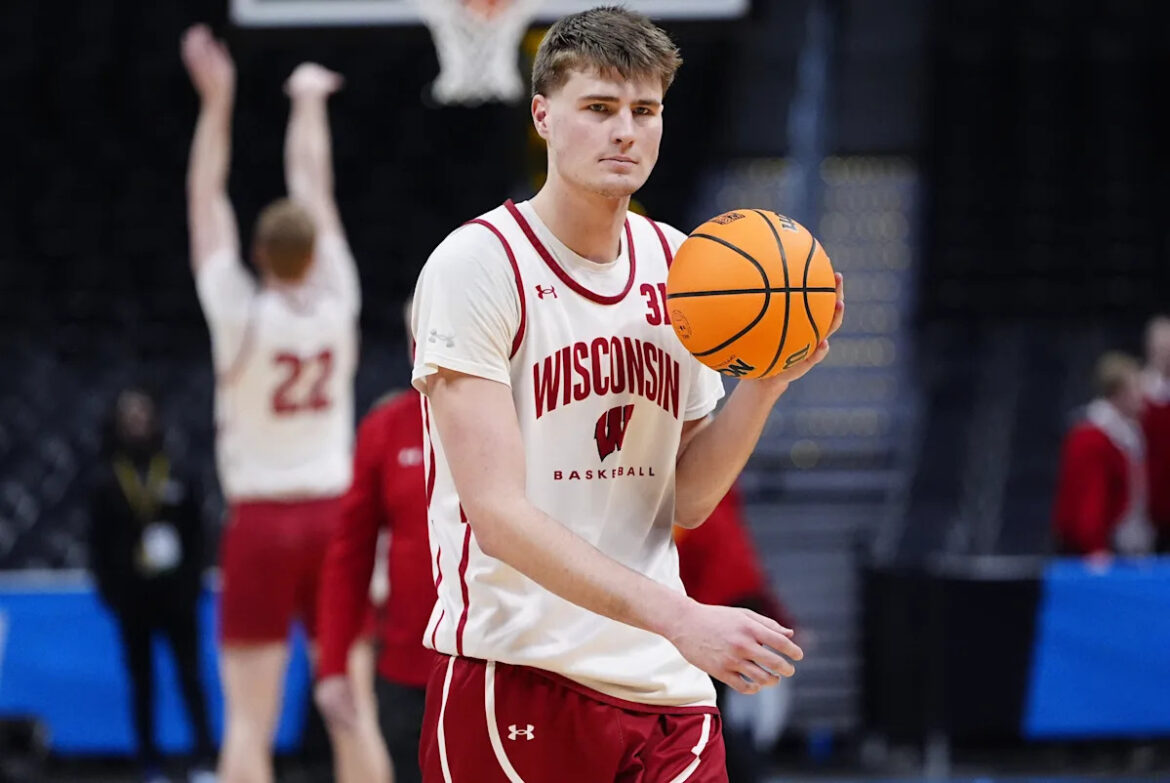The Wisconsin Badgers edged past the UW-Platteville Pioneers 69-53 in their second exhibition game on Wednesday evening, using a late run to complete the victory.
It was a much different game than the one Wisconsin played last Friday against the Oklahoma Sooners, as the Badgers struggled offensively for much of the first half and looked like a team still adjusting to playing with each other.
Advertisement
Nolan Winter led the way with 17 points and 15 rebounds in a much better performance than his 5/13 night against Oklahoma, but the Badgers struggled from deep and weren’t efficient offensively as a whole.
Here are three quick takeaways from Wisconsin’s 69-53 win over UW-Platteville.
Free throws
Wisconsin was abysmal from the free-throw line on Wednesday, shooting 9/19 after starting the day 1/8.
In the first half, Winter missed a pair of early free throws. Aleksas Bieliauskas later missed two as well after being fouled on a layup attempt. Then, Austin Rapp missed the back end of an and-1 for the Badgers to go 0/5 at the free-throw line in the opening frame.
Advertisement
The struggles continued to start the second half as Nick Boyd went 1/3 early, going 1/2 on a pair of free throws and also missing the back end of an and-1.
Wisconsin went 8/11 the rest of the way, but Winter missed all four of his free throws, while Rapp went 2/4 and Boyd went 3/5. The Badgers have a ton of good shooters, so this shouldn’t be a problem the rest of the season, but it seemed like the issues were more mental than anything.
Wednesday’s 9/19 effort came after Wisconsin shot 13/18 at the free-throw line against Oklahoma. Winter missed a pair of free throws in that one as well.
Wisconsin was an elite free-throw shooting team a season ago, and they got to the line at a high rate. They weren’t aggressive enough in the first half against an undersized team, but stepped things up in the second half to finish with 19 free throw attempts on the day.
Advertisement
The attempts have looked good, but the Badgers can’t afford to miss as many as they did on Wednesday.
Turnovers
The 15 turnovers showed how Wisconsin is a team still learning to play with each other offensively. Head coach Greg Gard installed a few more scripted actions on Wednesday, but still let the team play freely for the most part, and the Badgers struggled in those instances early.
The camaraderie will come, and things looked better in the offseason, but the Badgers have usually been a team that has limited turnovers. Some of them were just throwing the ball out of bounds on Wednesday.
Austin Rapp had an ugly seven turnovers on the day, while John Blackwell, Braeden Carrington, and Hayden Jones each had a pair.
Advertisement
The good thing is that Wisconsin’s defense continues to force turnovers at a good rate. They had 16 against Oklahoma and 14 against Platteville on Wednesday, recording seven steals.
But, Wisconsin can’t throw away possessions, especially when the three-point shooting isn’t falling. That led to an inefficient day where the Badgers averaged only 1.05 points per possession.
Ball movement
Despite the offensive struggles, the Badgers actually moved the ball pretty well in the first half. Guard Andrew Rohde shared postgame that was a big key for the team in practice this week, and I felt that looked promising in the first half.
Advertisement
But, it felt at times that there was a little too much ball movement, which is something you usually don’t say after a basketball game. However, the Badgers seemed to be too passive and were swinging the ball too much, passing up open shots or opportunities to be aggressive at the rim off the dribble.
That should settle as the team gets more used to each other, but Wisconsin needs to be more aggressive, especially when the threes aren’t falling. We saw more of that in the second half, where Wisconsin was 13/17 inside the arc, taking fewer threes, and also getting to the line at a much higher clip.
The Badgers have a talented starting five. Playing freely is important, but there needed to be more aggressiveness early.
Regardless, the ball movement being impressive is a good sign for the regular season.
